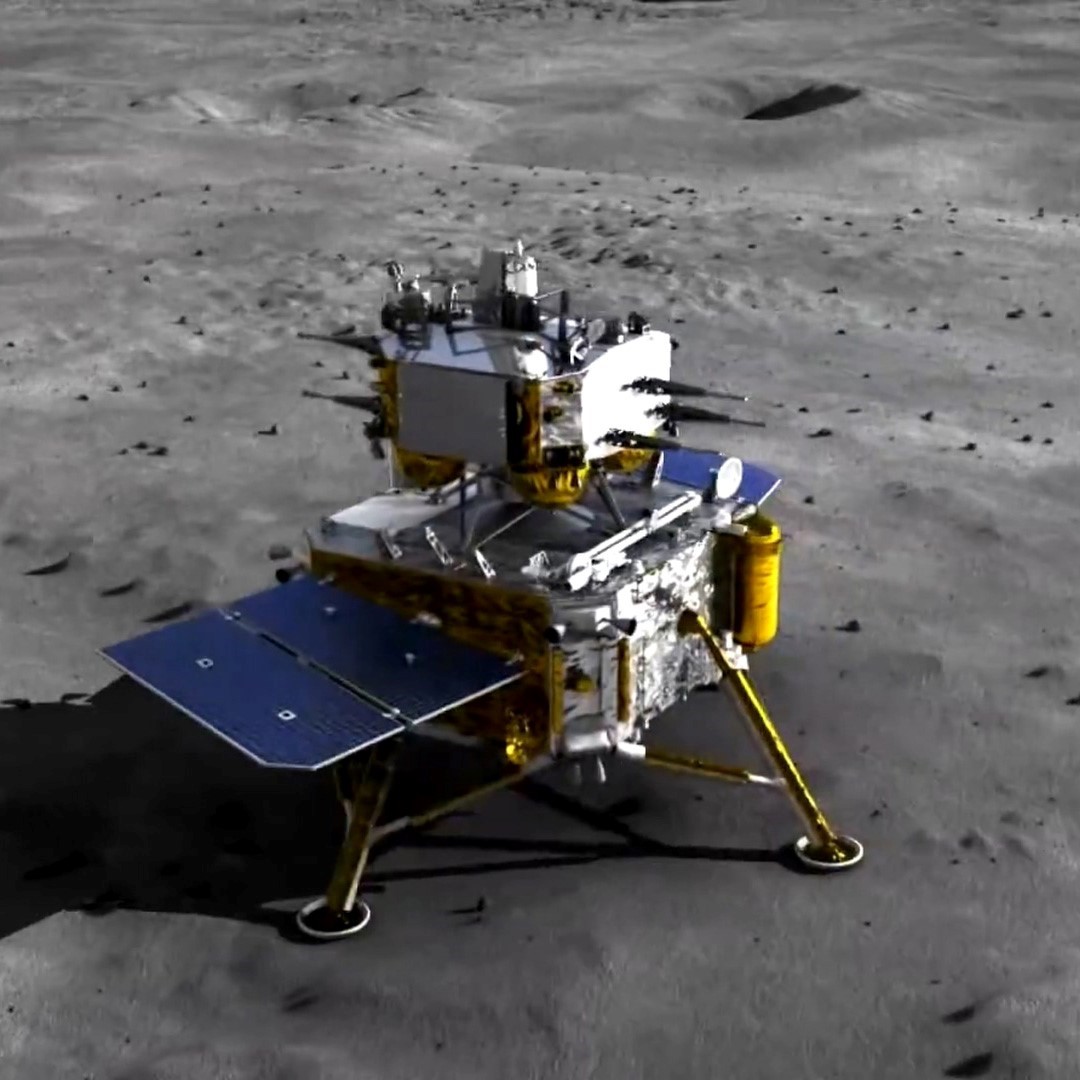Description

Source: IndianExpress
Disclaimer: Copyright infringement not intended.
Context
- China launched its second mission to the far side of the Moon. If successful, it will be the world’s first mission to bring back samples from the part of the Moon that the Earth never gets to see.
- The mission, known as Chang’e-6, lifted off from the Wenchang Space Launch Center.
Details
- The Chang’e-6 mission is planned to last for 53 days, encompassing various phases of lunar exploration and sample collection.
- Upon reaching the Moon's orbit, the mission's orbiter will begin circling the natural satellite, conducting observations and mapping of the lunar surface.
- The lander component of the mission will descend to the lunar surface, targeting the vast South Pole-Aitken basin, which is approximately 2,500 kilometers wide.
- The South Pole-Aitken basin is of particular interest due to its status as one of the largest impact basins in the solar system.
- The lander will utilize scooping and drilling mechanisms to collect samples of lunar regolith and surface material from the basin.
- Following sample collection, an ascent vehicle will be deployed from the lander to transfer the collected samples to the orbiter's service module.
- The orbiter's service module will then initiate its return journey to Earth, carrying the collected lunar samples for further analysis and study.
Scientific Significance:
- By retrieving samples from the South Pole-Aitken basin, scientists aim to gain a deeper understanding of the Moon's interior composition, geological processes, and evolutionary history.
- Analysis of the collected samples may provide crucial insights into the formation and differentiation of the Moon, including the origin of its mantle material.
- The Chang’e-6 mission builds upon the success of previous lunar exploration efforts by China, particularly the Chang’e-4 mission, which achieved the first soft landing on the far side of the Moon in 2019 and conducted rover-based exploration of the Von Kármán crater.

Why Explore the Far Side of the Moon?
- Inaccessibility from Earth: The far side of the Moon is never visible from Earth due to tidal locking, making it an unexplored and mysterious territory.
- Geological Differences: Recent studies have revealed significant differences between the far side and the near side of the Moon. The far side exhibits a thicker crust, more craters, and fewer lava plains (maria).
- Sample Analysis: Collecting samples from the far side allows scientists to analyze lunar material that has not been previously studied.
- Origin and Evolution: Studying samples from the far side can help unravel long-standing mysteries about the Moon's origin and evolution. Scientists aim to determine why the far side differs from the near side and how geological processes have shaped its surface over billions of years.
- Geophysical Measurements: Conducting geophysical measurements on the far side enables scientists to study lunar seismic activity, magnetic fields, and subsurface structures. These measurements contribute to our understanding of planetary dynamics and interior processes.
- Exploration Challenges: Exploring the far side poses unique challenges due to communication limitations and the absence of direct line-of-sight with Earth. Overcoming these challenges requires advanced spacecraft technology and autonomous navigation systems.
Must Read Articles:
Telescopes-on-and-around-moon
Change6
Sources:
IndianExpress
|
PRACTICE QUESTION
Q. The exploration of the far side of the Moon, often referred to as the dark side, presents a unique opportunity for scientific discovery and understanding of lunar geology and evolution. Discuss the key reasons why scientists are eager to explore this region. (150 words)
|
















